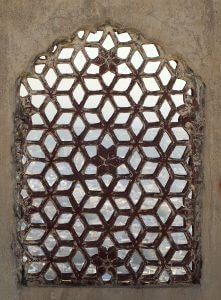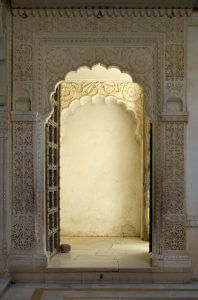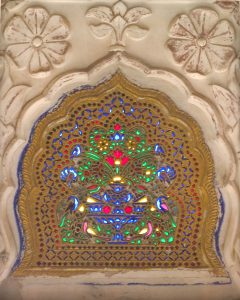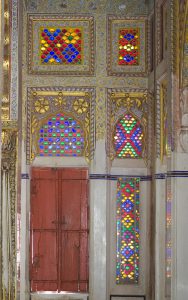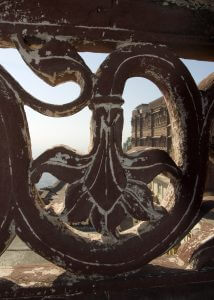The Fort and its palaces were built over period of 500 years following the foundation in the mid-15th century. As a result, the varied building styles of many different periods are represented, including the 20th century. The abrupt transition from one era to another, as you progress through the buildings, is one feature that makes a visit so remarkable. The chronology is not always obvious, though, especially as many parts were altered by later rulers, to suit changing tastes and needs.
After the foundation by Rao Jodha in 1459, the first main era of building was the reign of Maldeo (r. 1531-62). Renowned as a valiant warrior and successful commander even as a young prince before his accession, Maldeo suffered at setback in the middle of his reign. In 1544 the fort was captured and held for a year by Delhi forces under Sher Shah Sur. Once he had recovered it, Maldeo set about trying to ensure that such a calamity could never recur. His measures included strengthening the gates and fort walls; building additional outworks at its edges; and making a strong ‘keep’ wall in the highest and central part. He also built palaces, but these were later destroyed when new ones were built.
The second major phase of construction came much later, in the early 18th century, in the reign of Maharaja Ajit Singh (r.1707-24). Both the long gap and the renewed zeal have a historical explanation. Departing from normal practice, Maldeo designated his third son, Chandrasen, as his heir; and Chandrasen’s envious elder brothers sought support from the Mughals in an effort to unseat him.
The Fort and its palaces were built over period of 500 years following the foundation in the mid-15th century. As a result, the varied building styles of many different periods are represented, including the 20th century. The abrupt transition from one era to another, as you progress through the buildings, is one feature that makes a visit so remarkable. The chronology is not always obvious, though, especially as many parts were altered by later rulers, to suit changing tastes and needs.
After the foundation by Rao Jodha in 1459, the first main era of building was the reign of Maldeo (r. 1531-62). Renowned as a valiant warrior and successful commander even as a young prince before his accession, Maldeo suffered at setback in the middle of his reign.
In 1544 the fort was captured and held for a year by Delhi forces under Sher Shah Sur. Once he had recovered it, Maldeo set about trying to ensure that such a calamity could never recur. His measures included strengthening the gates and fort walls; building additional outworks at its edges; and making a strong ‘keep’ wall in the highest and central part. He also built palaces, but these were later destroyed when new ones were built.
The second major phase of construction came much later, in the early 18th century, in the reign of Maharaja Ajit Singh (r.1707-24). Both the long gap and the renewed zeal have a historical explanation. Departing from normal practice, Maldeo designated his third son, Chandrasen, as his heir; and Chandrasen’s envious elder brothers sought support from the Mughals in an effort to unseat him.

